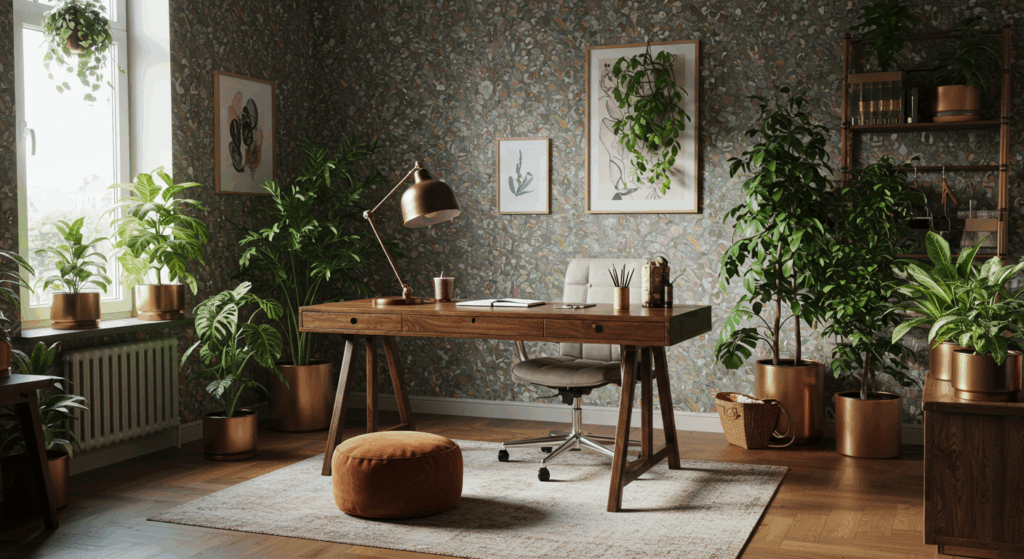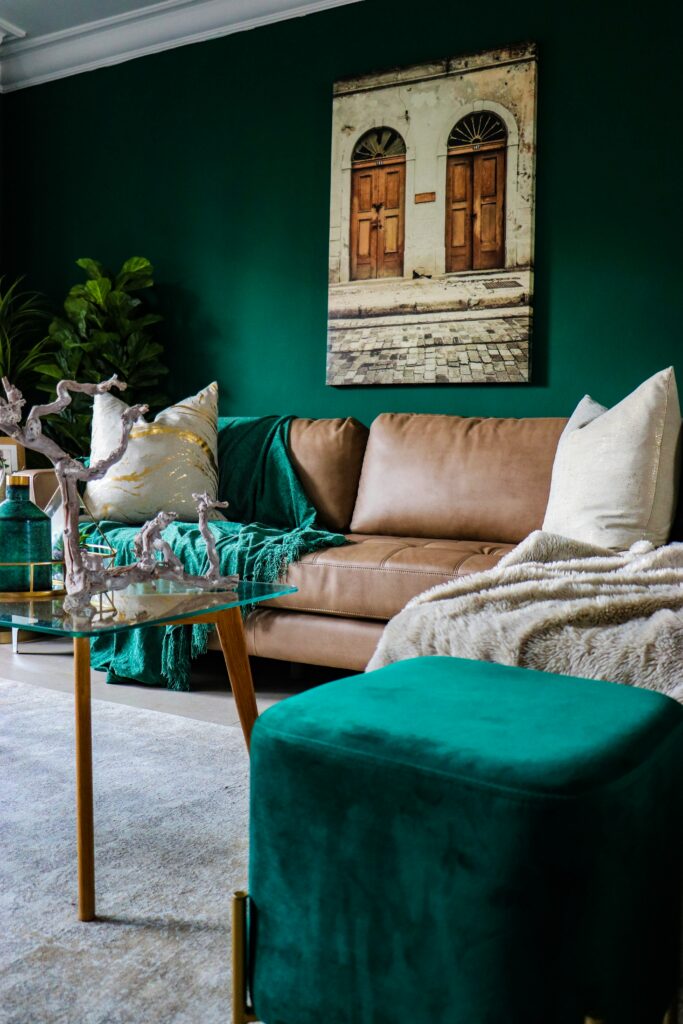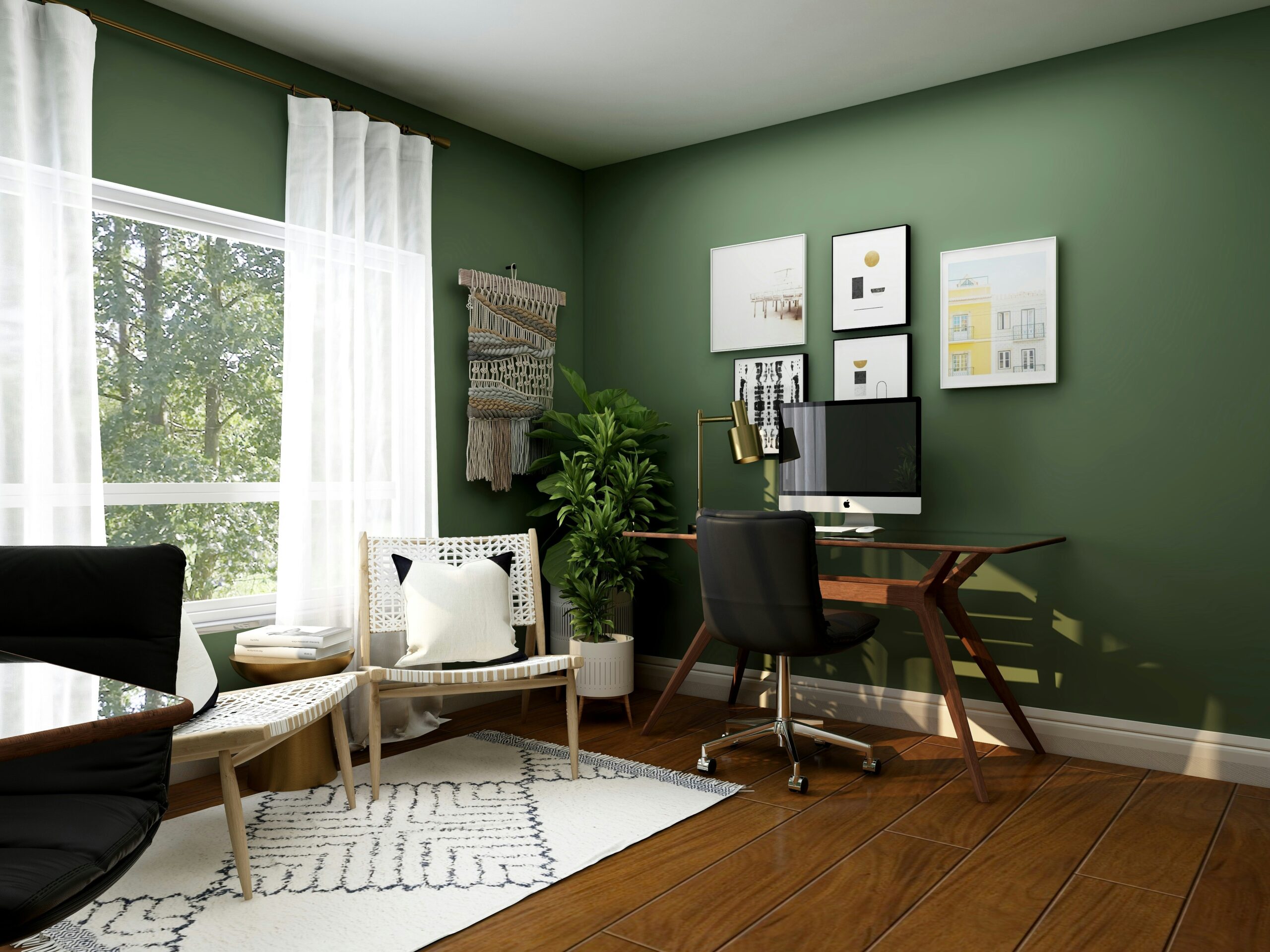The secret to creating a truly captivating space lies in interior design layering. It’s the technique that separates a flat, uninspiring room from one that feels rich, inviting, and full of character. Just as a musician layers instruments to create a symphony, designers layer textures, colors, and patterns to craft spaces that engage all the senses.
Interior design layering is more than just adding more items to a room. It’s about thoughtfully combining elements that complement and enhance each other, creating visual depth and tactile interest. Whether you’re working with a small apartment or a spacious family home, understanding how to layer effectively will transform your space from ordinary to extraordinary.
In this guide, we’ll explore the essential principles of layering and show you how to apply them to create a home that feels both sophisticated and authentically you.

Why Interior Design Layering Matters
Think of a beautifully designed room you’ve seen. Chances are, it wasn’t the individual pieces that caught your attention, but how everything worked together. That’s the power of interior design layering.
Layering creates visual depth that draws the eye through a space. It adds warmth and comfort through multiple textures. It establishes rhythm and flow using varied colors and patterns. Most importantly, it transforms a sterile showroom into a lived-in home.
Without proper layering, rooms feel one-dimensional and cold. With it, they become dynamic environments that tell a story and reflect personality.
Starting with Your Foundation Layer
Every successful layering strategy begins with a solid foundation. This base layer sets the tone for everything that follows.
Choose a neutral color palette as your starting point. Whites, soft grays, warm beiges, and muted earth tones provide flexibility for bolder additions later. These foundational colors won’t compete with your layered elements.
Select your primary textures carefully. Hardwood floors, natural fiber rugs, or linen window treatments establish the room’s basic character. These large-scale elements anchor the space and create continuity.
Consider your lighting as part of the foundation. Ambient lighting provides overall warmth, while strategic placement highlights the layers you’ll add. Natural light should also factor into your choices, as it affects how colors and textures appear throughout the day.
A strong foundation gives you the freedom to experiment with more dramatic layers without creating visual chaos.
Mastering Texture in Interior Design Layering
Texture is where interior design layering truly comes alive. It’s what makes you want to touch a velvet cushion or run your hand along a weathered wood table.
The key is contrast. Pair soft, plush materials like velvet, wool, and cotton with harder elements like wood, metal, or stone. A chunky knit throw draped over a smooth leather sofa creates instant visual interest.
Layer fabrics with intention. Start with larger pieces like area rugs, then add throw blankets, cushions of varying sizes, and window treatments. Each should offer a different texture while maintaining color harmony.
Don’t forget natural elements. Woven baskets, ceramic pottery, and houseplants introduce organic textures that soften manufactured materials. A jute rug beneath a glass coffee table balances industrial and natural aesthetics.
Play with finishes too. Matte walls alongside glossy ceramics or polished brass fixtures create dimension through light reflection. This interplay makes surfaces more dynamic throughout the day.

Building Your Color Story Through Layering
Color layering creates emotional depth rather than simply adding brightness. It’s about subtle variations that guide the eye and set the mood.
Try a monochromatic approach for elegant simplicity. Layer different shades of the same color family—think cream, taupe, camel, and chocolate browns. This creates sophistication without overwhelming the senses.
If you prefer more vibrancy, use complementary colors sparingly. A predominantly gray room might feature burnt orange accents in artwork, cushions, or a statement chair. Keep bold colors to roughly 10-20% of the overall palette.
Transition shades are crucial. They bridge the gap between your neutral base and accent colors, preventing jarring contrasts. A gray-blue might transition from pure gray to deep navy, creating smooth visual movement.
Remember that colors carry emotion. Cool blues and greens calm and refresh, while warm yellows and oranges energize. Layer colors that support the mood you want to create.
The Art of Pattern Mixing in Interior Design Layering
Patterns inject personality and rhythm into layered spaces, but they require careful orchestration. The goal is harmony, not competition.
Scale is your most important tool. Combine large-scale patterns with smaller ones. A bold geometric area rug pairs beautifully with fine herringbone cushions or delicate floral artwork. Different scales prevent patterns from fighting for attention.
Stick to a unifying element. This might be a shared color, similar style (all geometric or all organic), or consistent theme (coastal, botanical, or abstract). This common thread allows diverse patterns to coexist peacefully.
Give patterns space to breathe. Not every surface needs pattern. Solid colors and negative space are essential—they let the eye rest and appreciate each patterned element fully.
Establish a visual hierarchy. Choose one dominant pattern as your focal point, then use secondary patterns in smaller doses to support rather than compete with it.
Practical Layering: Function Meets Design
Interior design layering isn’t purely aesthetic—it serves practical purposes too.
Layer your lighting thoughtfully. Combine ambient overhead lights with task lighting at workspaces and accent lighting to highlight artwork or architectural features. This creates flexibility for different activities and moods.
Vary furniture heights and depths. A tall bookcase, mid-height console, and low ottoman create visual rhythm that guides movement through the space. This dimensional variety prevents monotony.
Rotate seasonal layers. Switch lightweight cotton throws for chunky wool blankets in winter. Replace bright summery cushions with richer autumnal tones. These updates refresh your space without major overhauls.
Avoiding Common Layering Mistakes
Even experienced designers can stumble with layering. Watch for these pitfalls:
Too many patterns overwhelm the senses. Limit yourself to three distinct patterns per room maximum. More than that creates visual noise rather than interest.
Ignoring scale relationships leads to imbalance. Tiny patterns disappear in large spaces, while oversized prints can dominate small rooms. Match pattern scale to room size.
Mismatched color undertones clash. If your base is warm-toned, keep additions warm. Mixing cool and warm undertones without intention creates discord.
Flat lighting flattens your carefully crafted layers. Multiple light sources at different levels reveal texture and depth that single overhead lighting cannot.
For more professional layering techniques, explore resources at Elle Decor.
Bringing It All Together
Interior design layering transforms houses into homes. It’s the difference between a space that looks good in photos and one that feels wonderful to live in.
Start with your foundation—neutral colors, primary textures, and good lighting. Build gradually with contrasting textures that invite touch. Develop a cohesive color story that evokes your desired emotion. Add patterns thoughtfully, respecting scale and giving them space. Layer functional elements like varied lighting and furniture heights.
Most importantly, infuse your personality. Display meaningful objects, favorite books, and treasured artwork. These personal layers create authentic connection and make your space uniquely yours.
The beauty of layering is that it evolves with you. Add a new texture here, swap accent colors there—your space remains fresh while maintaining its foundational character.
When you master the art of interior design layering, you create environments that engage every sense, tell your story, and welcome everyone who enters. That’s the true magic of thoughtful design.

